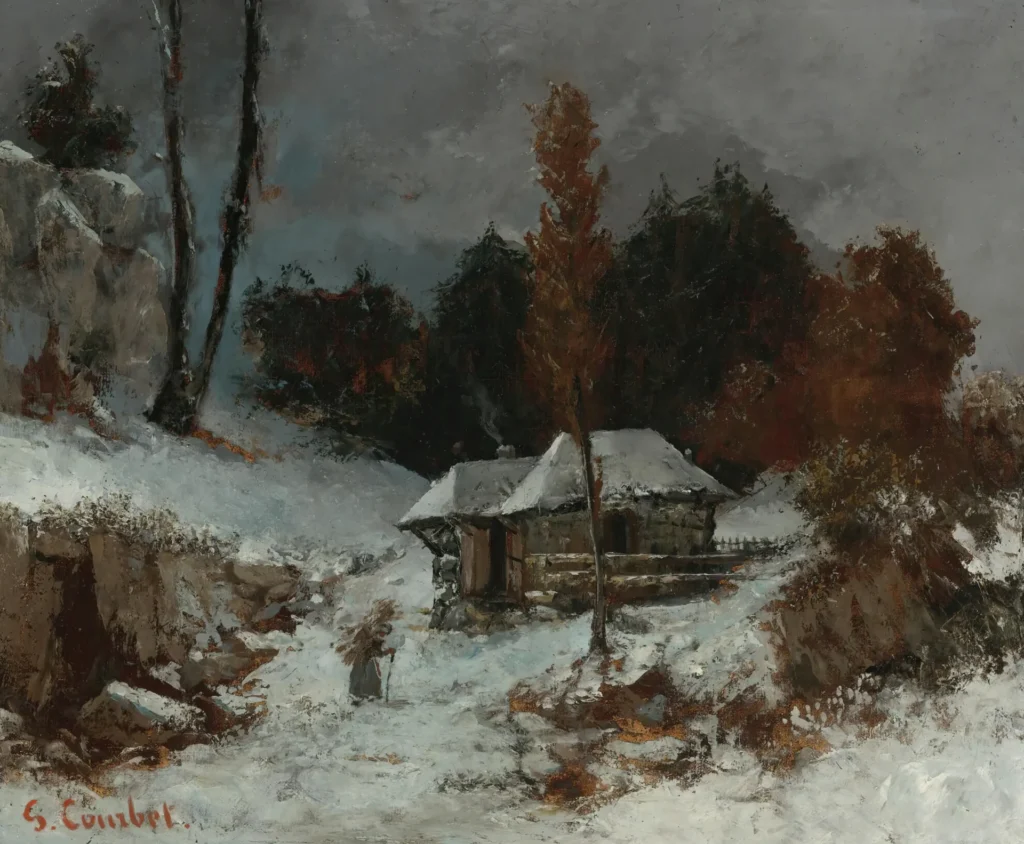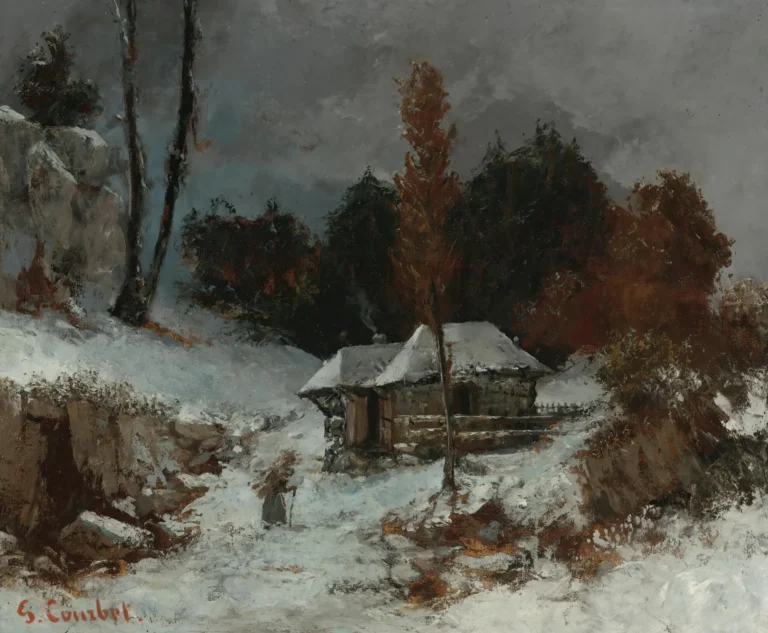Porteuse De Fagots Dans Un Paysage De Neige
Porteuse De Fagots Dans Un Paysage De Neige captures a solitary woman carrying firewood amidst a serene winter landscape. Painted by Gustave Courbet, a prominent figure in the Realism movement, this artwork emphasizes the beauty of ordinary life, reflecting Courbet’s commitment to representing the world as he saw it. Measuring 50.2 x 57.8 cm, the piece immerses viewers in the stark yet beautiful reality of 19th-century life.
Mid-19th Century
About the Artwork
This painting by Gustave Courbet is a quintessential example of the artist's commitment to realism. Created in the mid-19th century, it portrays a humble scene that invites viewers to appreciate the dignity of labor and the beauty of the natural world. The woman, depicted with strength and resilience, symbolizes the everyday struggles of life, especially in harsh winter conditions. Courbet aimed to elevate common subjects of the working class, a radical notion at the time, which challenged the established norms of art focused on historical or mythological themes. His depiction of landscape melds with realism to reflect the artist's deep engagement with his surroundings, providing a narrative that resonates with the viewer on both emotional and social levels.










